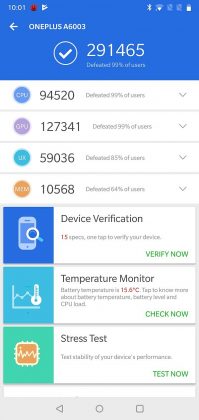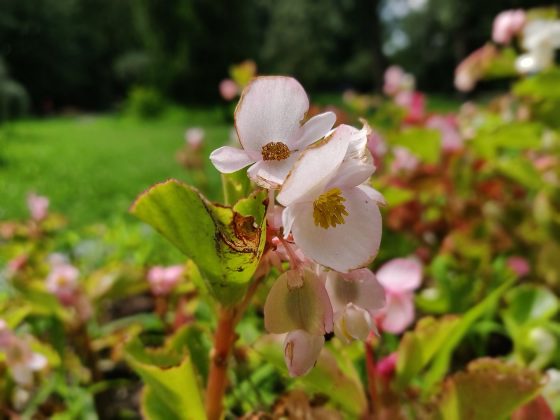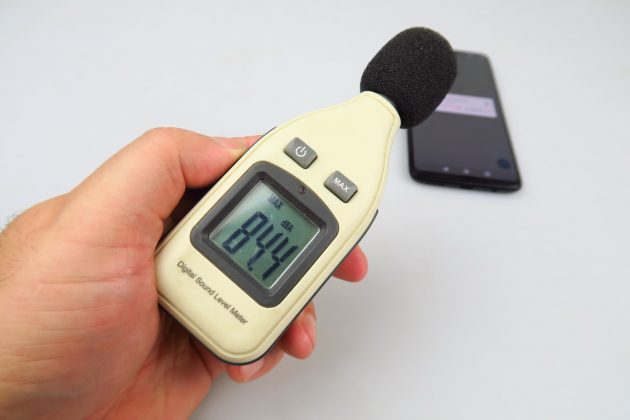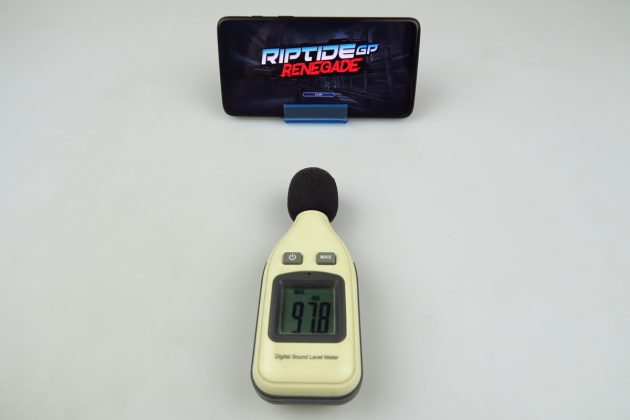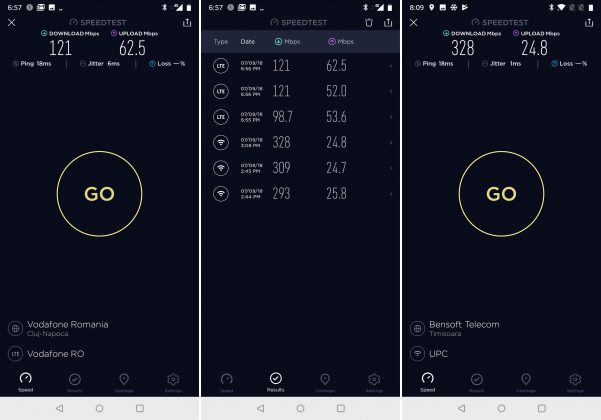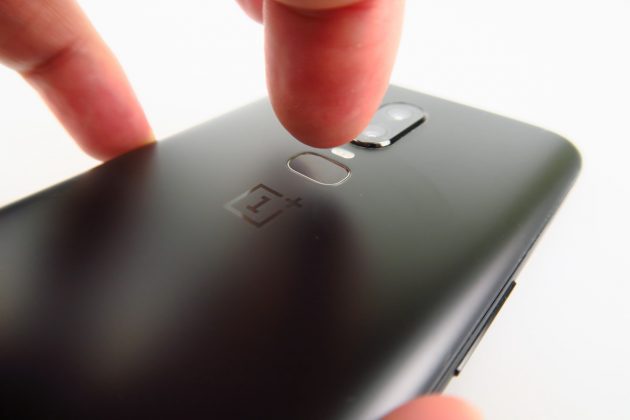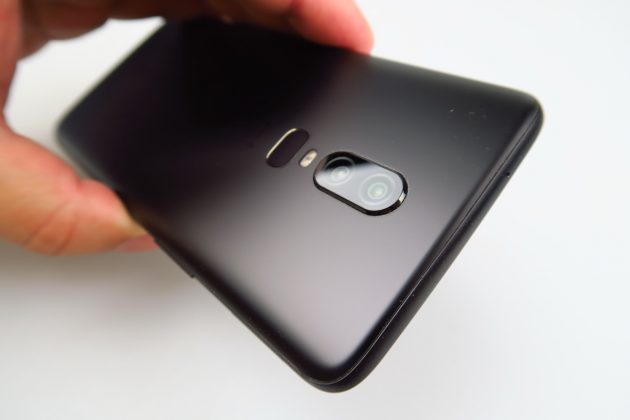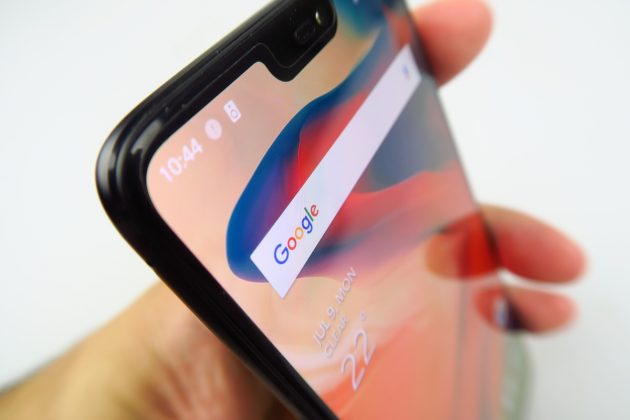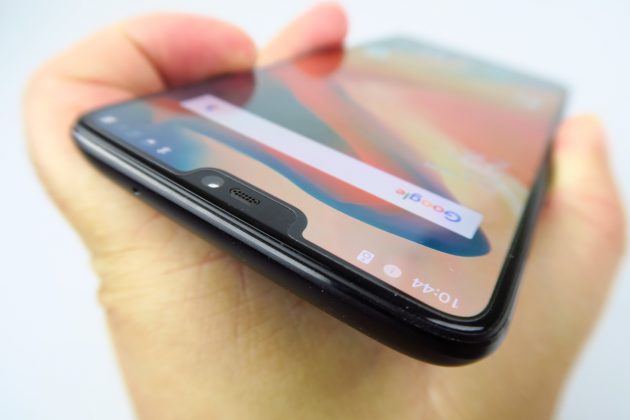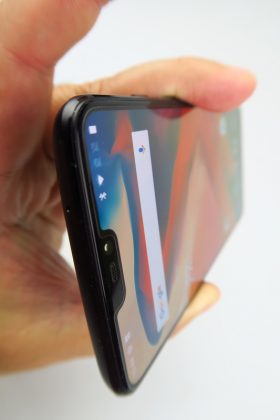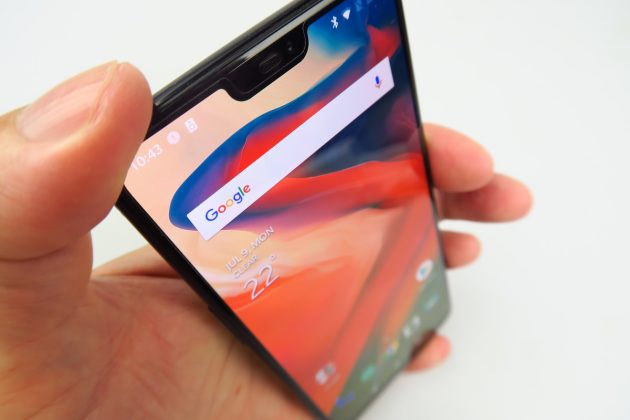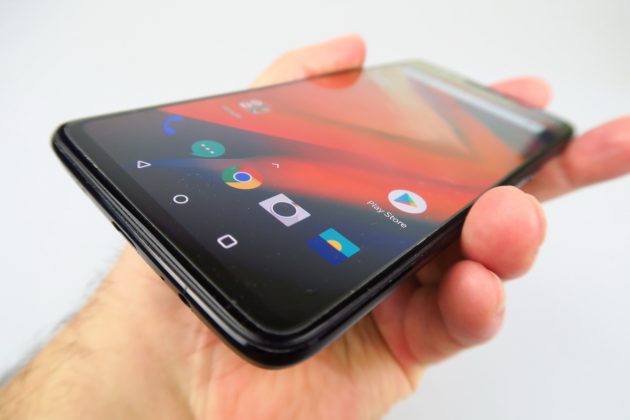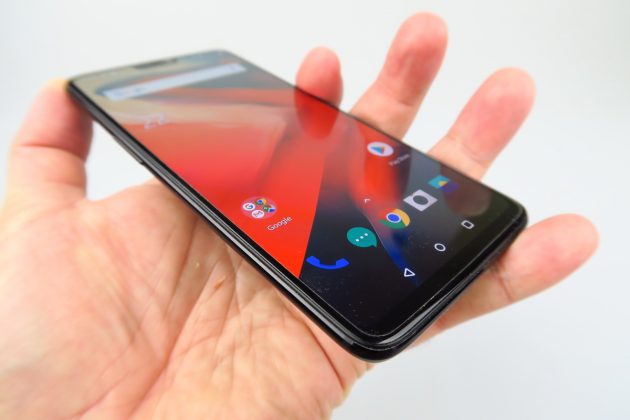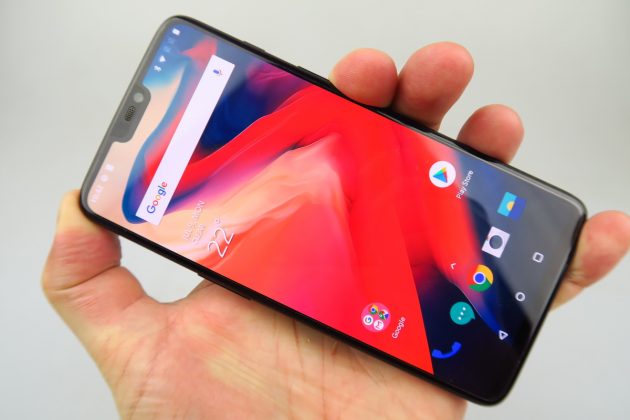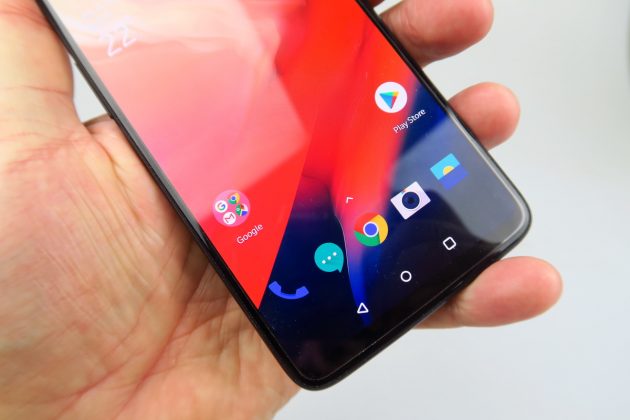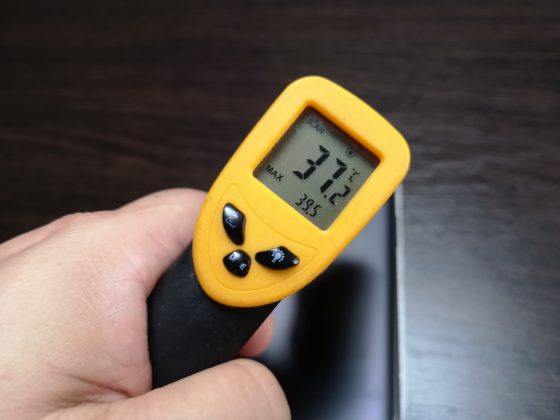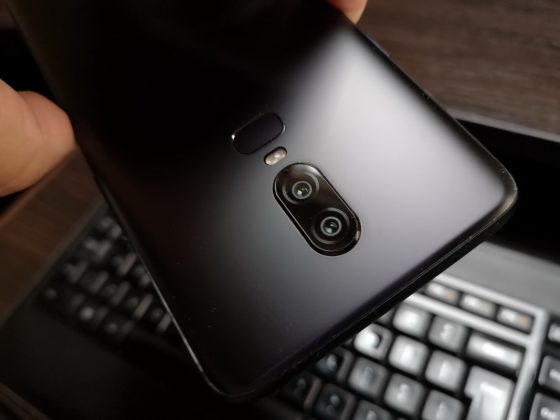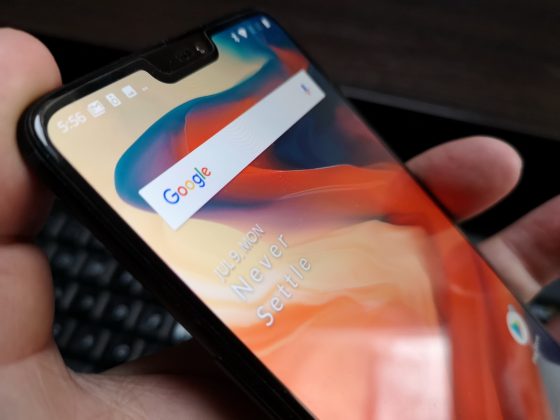We’re on the cusp of the launch of the OnePlus 6T, which should come this Fall, but before it drops, we’ve got the review of the OnePlus 6, in text format. Launched in May, the affordable Snapdragon 845 flagship was one of the cheapest handsets with a S845 CPU on the market when it debuted. It’s also the first OnePlus phone with a notch and one of the very few matte glass back phones I’ve seen. Priced at around $520, the device gets reviewed by us below.
Available in Midnight Black, Mirror Black, Silk White and Amber Red, the phone comes with a $20 shopping bonus for various OnePlus products if you buy it from here.

Design
OnePlus 6 uses a metal and glass review, it has a pretty big 6.28 inch screen and it’s a bit slippery, that was my first impression. It’s not the comfiest phone in the world, at least if you’re going for one hand usage. It’s a long and wide machine and it pays the price for it. The glass looks and feels like metal, the back one, like a foggy windshield of sorts and that’s original.

This smartphone measures 7.75 mm in thickness and weighs 177 grams. Compare it to the ZenFone 5z and you’ll see this device is 12 grams heavier, but slimmer. Huawei P20 Pro is heavier by 3 grams. OnePlus 6 has a solid build, is made of premium materials and it doesn’t get smudged easily. Even though the maker of the device promises water resistance, the lack of IP rating makes me doubt it.
The main problem here is the lack of personality, in spite of the cute mate glass.

Display
OnePlus ruffled a few feathers when they decided to pick up the notch for their flagship screen. They picked a 6.28 inch Optic AMOLED panel with a 19:9 aspect and a notch. There’s also a resolution of 2280 x 1800 pixels and sRGB and DCI-P3 modes. The viewing experience involves some very accurate colors, excellent brightness, great contrast and wide angles. The black is pretty deep.
We put the microscope on and saw a Pentile Matrix arrangement. The luxmeter showed a value of 597 LUX units, which is great in my book. It beats the Nokia 8, Galaxy Note 8 and iPhone 8 Plus, but scores below the Xiaomi Mi 6, Huawei P20 Pro and Xperia XZ, plus even the OnePlus 3. Settings include Adaptive Brightness, Sleep, Night Mode, Reading Mode and calibrations like Default, sRGB and DCI-P3.

Adaptive Color and Custom Color (with a cool or warm slider) are part of the package. You can also hide the notch and go full screen, plus there’s Ambient Display, font size and the works. Overall a not bad screen, but I would have liked more pixels.
Hardware
The hardware here is top notch, all the way up RAM-wise and CPU wise. There’s a Qualcomm Snapdragon 845 CPU here, 6 or 8 GB of RAM and 64 GB, 128 GB or 256 GB of storage (UFS 2.1.2) and no microSD. The smartphone is very snappy, has very fluid animations and runs any game perfectly. PUBG Mobile, Fortnite, Asphalt 9, you name it! Zero lag, fluid graphics, great frame rate.

We also did benchmarks and in AnTuTu 6 we beat the ZenFone 5Z and Galaxy Note 8, but scored below the Galaxy S9+ and Nokia 8. In AnTuTu 7 we got past ALL phones, scoring first spot at the time of testing. We also beat the ZenFone 5z by 20k points. In GeekBench 4 Multi Core we beat the HTC U12+ and ZenFone 5z, but scored below the iPhone X and Galaxy S9+. Slingshot has a great score too, second placed only to the ZenFone 5z.
We’re also a couple of points above the HTC U12+ and Galaxy S9+. Very solid overall and temperature is not half bad, with 39.5 degrees Celsius reached in GFXBench and 33.9 degrees Celsius in Riptide GP Renegade, so everything is perfect.
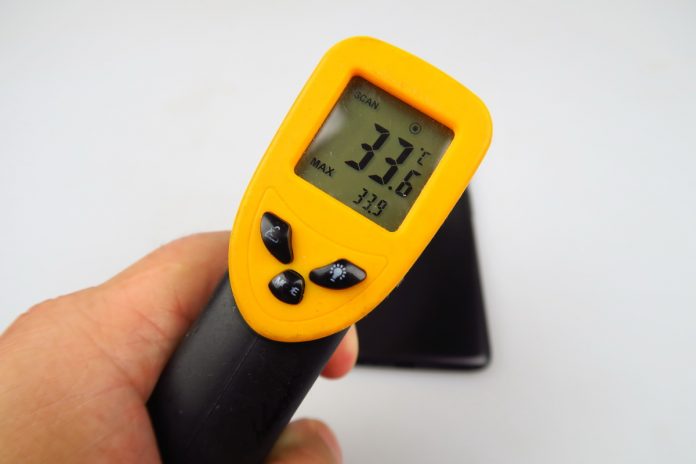
Battery
OnePlus phones have been a mixed bag when it comes to battery life and the OnePlus 6 was met with some reserve, because it has a 6+ inch screen and only a 3300 mAh battery. Other companies are already going to 4000 mAh fast. It also has fast charge, at 5V and 4A and when it comes to the HD video playback test in a loop, we scored 11 hours and 4 minutes, which is solid. It goes past the iPhone 8 and Nokia 8, plus the ASUS ZenFone 5Z, but scores below the Galaxy S9+ and Google Pixel 2 XL, as well as the Huawei P20 Pro.

PCMark is a little bit more modest, at 7 hours and 48 minutes, which is just OK, not memorable. It beats the HTC 10 for sure, the Nokia 8 and HTC U12+, but it’s no match for the OnePlus 3, Xperia XZ2 and Galaxy S9+. It’s also the equal of the HTC U11. Charging takes an amazing 1 hour and 8 minutes, very close to being an all time record, but placed just third, after the Zenfone 5z and a Galaxy S6 Edge.
One hour of charging is good enough for 95% battery and 30 minutes gives you a crazy 71%. Settings include Battery Saver, Battery Optimization and Advanced Optimization. I’d say the charging is the real star here…

Multimedia
In spite of the stereo craze, OnePlus went with a single speaker here, just the one on the bottom left side. It’s pretty easy to cover with your hand when you hold the handset in landscape mode. We’ve got Dirac HD sound here, no EQ and no headphones bundled. There’s also no FM radio. So we moved straight to the listening experience, which offered us a loud and clear sounds, plus a solid bass and a great voice.
I particularly loved the way the games are heard, also the guitar solos. There’s also vibration of the back at top volume. We did a decibelmeter test and achieved 84.4 dBA when playing our typical audio sample, going past the Nokia 8, Google Pixel 2 XL and Galaxy S9+, but scoring below the iPhone 7, Galaxy S8 and OnePlus One even. We also did a Riptide GP Renegade test, achieving 97.9 dBA, which is superior to the Google Pixel 2 XL and Xperia XZ2, so that’s not bad.

It’s also below the HTC U12+ and Galaxy Note 8. Yes, I know I mentioned the lack of an EQ, but it’s also true we have an Audio Tuner, that lets you switch headphone type, use 7 custom channels and play with genres. You need to bring your own headphones for that though. Overall no records broken and a pretty solid bass.

Camera
Time to address the camera, traditionally one of the weak points of the OnePlus devices. OnePlus is already used to relying on dual cameras and brace yourself for the inevitable triple camera OnePlus 6T already. In the meantime we played with the dual cam of the OnePlus 6, which offers a combo of 16 MP + 20 MP shooters, with the first being a Sony IMX519, with 1/2.6 inch size and 1.22 micron pixels. It has both EIS and OIS, F/1.7 aperture and DCAF.
There’s also a dual LED flash in the mix and the secondary 20 MP camera resorts to a Sony IMX376K sensor with PDAF and F/1.7 aperture. The cam does 4K 60 FPS and no super slow mo. It also knows Bokeh. Upfront there’s another Sony sensor, as 16 MP IMX371 one, with fixed focus and F/2.0 aperture, as well as EIS and Full HD video. The camera shutter is ultra fast when it comes to pic taking and the zoom is also snappy. There’s instant 2x zoom and very solid focus speed.

There’s also a Pro Mode and RAW capture. We move on to the day time gallery, that features super colors for the shots, with Pixel 2 XL vibes and the feeling we’re watching a live painting of sorts. There are tons of details captured here and a solid green for vegetation and blue for the sky. Go past 3x or 4X in zoom and there’s grain, plus we have the occasional overexposed shot.

It’s less burnt than the Xperia XZ2 and Huawei P20 Pro though… The zoom is inferior to the P20 Pro also. HDR is solid, lighting up the people at that lake side. Bokeh feels like a bit of hit and miss, but when it hits, the results are excellent. I’m loving the texture of objects caught in closeups. Panorama is rather generous at 23520 x 3760 pixels. Selfies feature great looking eyes, a nice facial rendition and lovely texture.

Even the background looks OK and the selfie Bokeh is actually solid. I felt a bit too white at times in some shots. I feel this is a good phone for taking touristic landscape shots. It’s pretty much top 5 2018 material, the equal of Galaxy S9+ and Pixel 2 XL. It can fight an iPhone X and Xperia XZ2 as well. The Bokeh isn’t still always spot on and some overexposure spoils the party.

Selfies are top 3 material. Low light photo captures have great colors, excellent brightness, but it’s no Pixel 2 XL or Galaxy S9+ for sure. It doesn’t go overboard with the yellow hue of the night time lamps and it’s got a solid zoom. The halos are kind of big and they radiate like crowns from the lights. It’s a very settled set of pictures though, with no visible flaw.

The flash is great, not drowning the pics in white, so that’s nice to see. Once again a top 5 material, but you can do better with a Samsung and Pixel 2 XL. Sometimes the shots feel a bit unnatural and digitally processed.
On the video front, we shot in MP4, Full HD at 30 FPS and 20 Mbps, but there’s also 4K at 60 FPS. This is where the burn came in, with overexposure, accompanied by a not very satisfying zoom and a superb mic though. If you want perfection, go with the 4K 60 FPS video capture though. It’s got everything figured out: colors, focus, details and clarity. I loved the way the sky looks in these video captures, something that even the Galaxy S9 struggled with.
I found the optical stabilization test a bit shaky, to be honest, but at least there was no refocusing problems. Objects have a great texture and the panning feels very “machine-like”, not very naturally flowing. It’s rather a step by step approach, rather than a fluid, liquid motion. The 60 FPS video was kind of underwhelming, with a lot of overexposure and pretty poor details, both in the distance and when zooming in.
We did catch a cute pigeon slow motion and I found the microphone to be excellent, catching a large amount of bass from that artistic piece we caught on the lake. Another good thing is the way the selfie camera does videos. They’re basically perfect, top 3 material for sure. They can easily rival what the excellent Note 9 selfie filming is offering. Overall, video capture feels more like Xperia XZ2 and Huawei P20 Pro and less like iPhone X, HTC U12+ and Galaxy S9+, which are a bit better than the OnePlus 6.
That’s day time video and the low light ones were a bit flawed, sporting a bitter yellow. Things get shaky if you move around, the zoom is rather poor and the microphone is once again pretty solid. I also found these videos a tad darker than I would have wanted. Light artefacts were spotted and there’s too much flicker to enjoy what’s being captured.
Street light halos aren’t overblown and halos have a decent size. It all feels a bit like the ASUS ZenFone 5Z and Huawei P20 Pro, so in general just OK for a flagship, but not more than that. Google Pixel 2 XL is 15% better, as are the Galaxy S9+ and iPhone X. I feel that the biggest improvement for OnePlus 6T has to be OIS and maybe the 60 FPS video, plus better low light capture.

Browser
We used Chrome obviously and it was lightning fast, plus produced some great benchmarks (Jetstream, Sunspider). The virtual keyboard is stock material and it’s pretty comfy.
Connectivity
OnePlus 6 has all the bases covered, starting with USB Type-C 2.0, to audio jack and dual nano SIM card slots. We’ve got 4G LTE Category 16, 4X4 MIMO and WiFi 802.11 a/b/g/n/ac (2X2 MIMO). Bluetooth 5.0, NFC and GPS, Glonass, Beidou and Galileo are in the mix. Calls were perfect, with the microphone being a standout point, superb even. We also did a SpeedTest and achieved 121 Mbps in 4G and 62.5 Mbps in upload speed.

When it came to WiFi, we got to 328 Mbps in download and 25.8 Mbps in upload.
OS, UI, Applications
OnePlus 6 runs on OxygenOS, based on Android Oreo 8.1. It’s a collection of stock Android stuff basically. It’s all clean, well organized, rectangular menus, fluid UI and keeping it pretty close to stock. The leftmost homescreen is a sort of aggregator that shows you a memo app used for note taking, contacts, recent apps, cards, weather and you can add more cards.
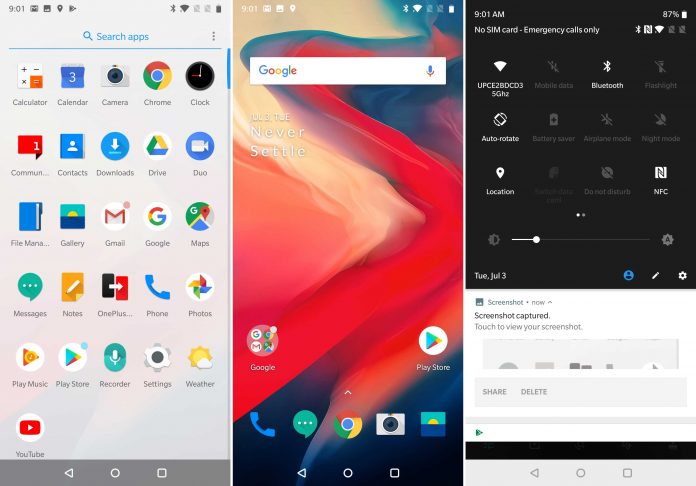
Multitasking is done via a carousel and we’ve also got split screen. Keeping the homescreen pressed reveals the typical wallpapers, widgets (stock) and settings related to icon pack, home screen, layout and more. Swipe down and you’ll reach Quick Settings and notifications. We’ve also got a gaming mode and a reading mode to mess about with here. Settings are finally an opportunity to mention the Alert Slider.
As you know OnePlus has a passion for putting an Alert Slider on the side, with modes like Silent, Vibrate and Ring. There are also gestures in the Settings are and features you can associate to buttons. You can hide the nav bar and make gestures replace the virtual buttons (Back, Home, Recents). Prepping for Android Pie I see… You can do a 3 finger screenshot and draw letters and symbols to trigger apps.

The fingerprint scanner has a 16 setup setup and the sensor is pretty hard to find simply by feeling it. At the same time it’s probably one of the fastest biometrics mechanisms in the world maybe even the fastest. We could even be dealing with new technology, maybe something ultrasonic, it’s THAT fast. We’ve also got Face Unlock, which also lights up your visage in order to do the unlock properly.

The setup is on the long side, but the unlock speed was OK in my book. I’ve seen faster on the ASUS ZenFone 5z, to be honest. Settings continue with a Pocket Mode and OTG storage, while the Gaming Mode blocks notifications. You can answer calls via the speaker while gaming, that’s another option. When it comes to apps, there’s 26 of them here, which is a pretty OK number and the apps themselves are stock ones.
There’s Community, Duo, Drive, File Manager, YouTube, Weather, Notes, Switch Phone and more. I’ve seen quite a few updates happening on the device, showing that OnePlus really cares about its users and keeping them up to date. Overall, OxygenOS remains one of the classiest and lightest flavours of Android.

Verdict
Pros:
- nice matte glass back
- fast charge
- best performance available (at the time of the review)
- fast fingerprint unlock (crazy fast)
- bright screen
- OK volume
- fantastic microphone
- solid picture taking
- excellent selfies
- great price
- OK video playback
Cons:
- no waterproofing in IP standards
- no stereo speakers
- problems with the green color in pics
- some overexposure
- stabilization could be better
- low light capture not on par with rivals
- expected more battery life in PCMark
OnePlus is definitely a “bang for the buck” phone, that doesn’t make many compromises, just some of the usual OnePlus Ones. The attributes that make it THE BEST are the microphone, selfie video, gaming performance and flawless software. I don’t know if you know, but OnePlus somehow made it to top 5 premium Android smartphone makers globally in Q2 this year. That alone speaks to the quality of this device.
Its only drawbacks are not dealbreakers and the only reason to skip this phone is the less than perfect camera, especially in the video area. I have a feeling OnePlus 6T will be better.


